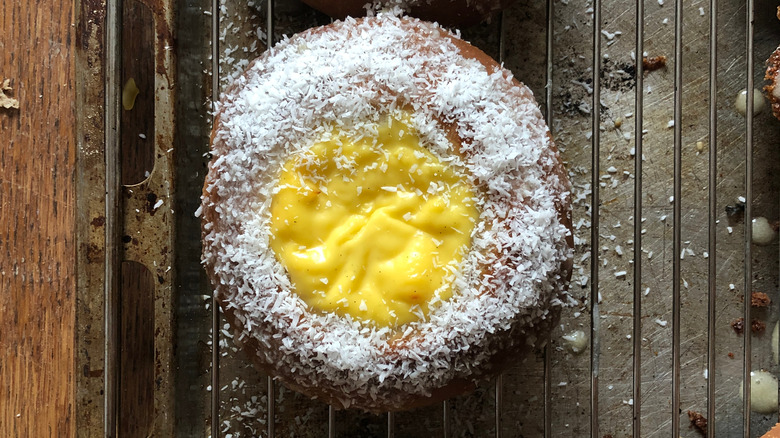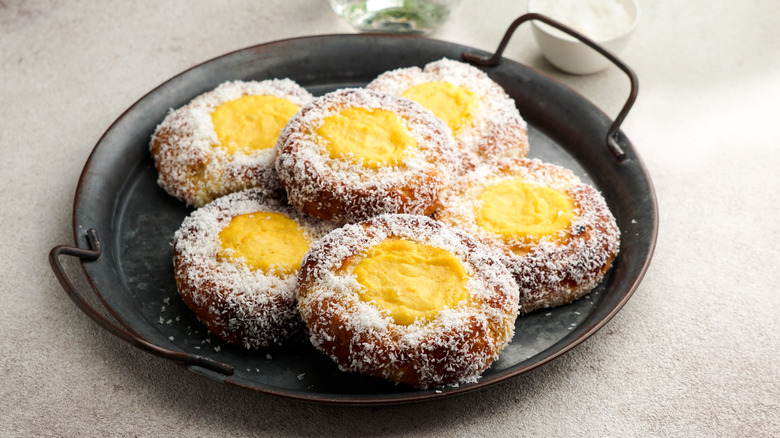What Makes Norwegian Skolebrød Unique?
Thanks to Disney, many of us think of Norway and imagine sassy, talking snowmen, irascible reindeer, and towering castles of glittering ice. After experiencing skolebrød, though, we may find ourselves irrationally jealous of the Norwegian school children who get to enjoy these wonderful, custard-filled sweet buns. Skolebrød translates from Norwegian as "school bread." It's also called skoleboller, or "school buns," in some parts of Norway. North Wild Kitchen tells us that skolebrød can be bought at bakeries, cafes, grocery stores, and even gas stations all over Norway — and home bakers prepare the delectable treats as well.
Living a Nordic Life explains the origins of skolebrød as "patchy." The buns are typically believed to have originated in the 1950s as a treat included in the lunches of school children in Norway. According to Ana's Norwegian Bakeri, though, historians say skolebrød was first baked in 1939 by Gerda Nielsen in the city of Oslo, where she included them in the lunches of her son, Jens. It was in the 1940s that the enterprising Jens began selling skolebrød to schools in Oslo.
What makes skolebrød unique?
Ana's Norwegian Bakeri describes skolebrød as a sweet bun flavored with cardamom, topped with a glaze, sprinkled with coconut, and filled with vanilla custard. The cardamom flavoring is distinctive, lending the sweet buns warm, herbal, citrusy-mint notes. The skolebrød recipe calls for an enriched dough, meaning it contains milk, butter, and egg (per Living a Nordic Life). This enriched dough rises twice and produces a bun that's rich, delicate, and beautifully airy.
After the skolebrød dough has risen the first time, it's shaped into round buns for the second rise. Before the buns go in the oven, an indentation is created in each one, and they're filled with a creamy custard made with vanilla bean, according to North Wild Kitchen. After the buns have baked to a light golden brown, they're cooled, brushed with a thin icing, and dipped in dried coconut. The Food Dictator provides a tangy variation by adding a little bit of a lingonberry-raspberry jam mixture on top of the custard before serving the skolebrød. Since it's not easy to find these delightful school buns in bakeries in the U.S., they're worth making at home — using our best bread practices, of course.

